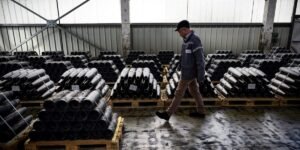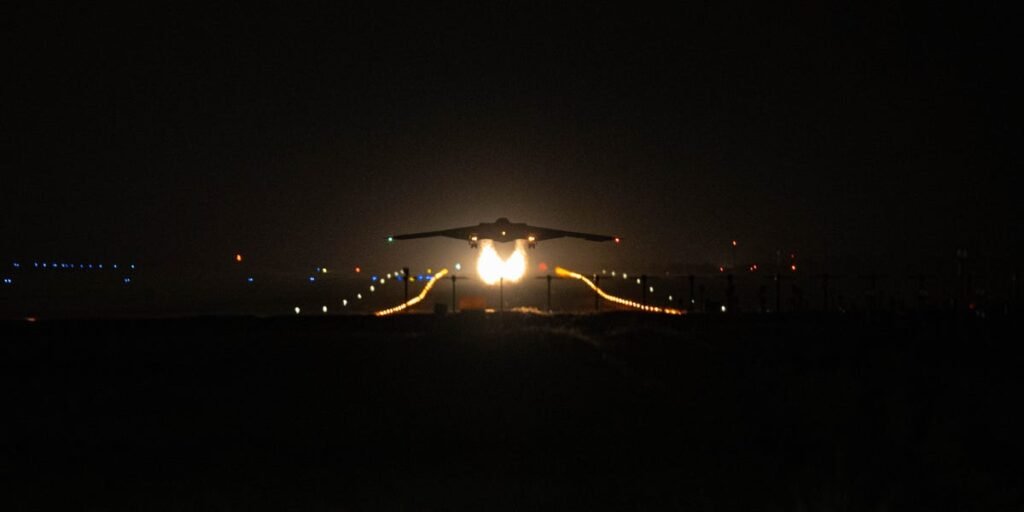How does a country destroy another’s know-how to build a technology?
That is the dilemma facing US and Israeli leaders.
President Donald Trump said Iran will never be able to rebuild its bombed nuclear facilities, asserting the American strikes “completely obliterated” the sites. But that’s not the same as assessing whether Iran can still build nuclear weapons — the reason that drew the US into Israel’s attacks on Iran this weekend.
Officials and many experts say the attack likely only delayed Iran’s ability to build nuclear weapons and that the whereabouts of its highly enriched uranium — enough to build at least a half dozen warheads — remain unknown. It’s unlikely the recent bombing of Iranian facilities by the US and Israel has killed Iran’s nuclear program and may only harden its ambitions.
Surviving stockpiles of highly enriched uranium, the resilience of Iran’s deeply buried underground facilities, the potential for undisclosed or covert sites, and its scientific and technical expertise, coupled with Iran’s strong desire to protect and preserve this program, all potentially point to this being a significant speed bump, not a roadblock.
US stealth bombers and a guided-missile submarine executed precision strikes on Fordow, Natanz, and Isfahan this past weekend. In the aftermath, Trump declared that the sites, all key to Iran’s nuclear program, “were totally destroyed.”
Satellite images of the areas showed surface damage caused by US strikes, which included the use of GBU-57 Massive Ordnance Penetrator bunker-buster bombs dropped by US Air Force B-2 Spirit bombers and Tomahawk cruise missiles fired by a US Navy submarine. Internal damage at the facilities was far less clear but could be substantial, as Trump has said.
An early classified US intelligence assessment obtained by CNN and The New York Times determined the strike only set Iran’s developments back a few months and did not eliminate its enriched uranium stockpile or its centrifuges, the devices that can spin uranium gas to weapons-grade level. Iran could rebuild lightly damaged centrifuges or construct new ones and is not restricted to doing so only at the sites the US attacked.
A final battle assessment, Gen. Dan Caine, chairman of the Joint Chiefs of Staff, said Sunday, “will take some time.”
Operation Midnight Hammer was designed to “severely degrade” Iran’s nuclear program, Pentagon leaders said. US Vice President JD Vance and Israeli Prime Minister Benjamin Netanyahu said that the strikes had set Iran’s nuclear program back a number of years.
In recent days, nuclear weapons experts have debated just how long that’ll be — questions that turn on how much enriched uranium Iran retains, how quickly it can enrich more and build the bomb it goes into and, most critically, whether Iran intends to do so now.
Jeffrey Lewis, a prominent arms control expert and professor at the Middlebury Institute of International Studies at Monterey, posted an analysis on X explaining that satellite images had tracked Iranian trucks at Fordow days before the US strike, potentially moving sensitive equipment. He noted that there had been no effort to strike the underground facility next to Natanz, and it had enrichment facilities that weren’t affected by the strikes.
“Let’s say Iran decides to rush a bomb,” Lewis wrote. He said that based on the abilities and materials likely still available, the Iranians could theoretically enrich a substantial quantity of weapons-grade uranium in a matter of months.
Vance said that it’s unclear where Iran is keeping stockpiles of near-weapons-grade uranium, telling ABC’s “This Week” that the US was planning on having conversations with Tehran about it.
The biggest unknown after the recent strikes is how much weapons-grade or near-weapons-grade uranium was actually destroyed.
Iran had about 900 pounds of uranium enriched to 60% as of the middle of last month, per the International Atomic Energy Agency. The head of the IAEA said Iran protected its existing enriched uranium and believes it was moved before the strikes.
James Acton, the co-director of the Carnegie Endowment for International Peace’s nuclear policy program, wrote in a Politico op-ed on Monday that this is enough for a few nuclear weapons after further enrichment.
“Iran has a decent shot at keeping that highly enriched uranium safe and secret,” Acton said, explaining that the material is typically stored “in small cylinders that are roughly the same size and shape as scuba tanks” and tracking that will be difficult.
Most of Iran’s nuclear scientists and technicians likely survived the strikes. The facilities were evacuated in advance, as the possibility of an attack on the nuclear sites was telegraphed ahead of time even if the bombing was a surprise. Their expertise, along with potential hidden facilities, other known sites that weren’t struck, and the remaining uranium stockpiles, suggest Iran could revitalize its program, potentially very quickly.
Speaking to CNN’s Christiane Amanpour this week, former Secretary of State John Kerry, one of the architects of the now defunct Iran nuclear deal, said that the issue here is that “you can’t bomb away the memory of how to make a bomb.”
“You can’t bomb away the knowledge that they have developed,” he said, adding that “you can’t bomb away the broad array of technicians that have been working on this for years who will go back to work if that’s the mission they’re given by the leadership of the country.”
The possibility that Iran’s nuclear program may not be as devastated as first announced, as well as media coverage and a classified US assessment, have angered Trump.
“The sites that we hit in Iran were totally destroyed, and everyone knows it,” he posted on Truth Social on Monday. “Only the Fake News would say anything different in order to try and demean, as much as possible.”
After the US strikes, it’s also possible that Iran will expedite efforts to develop a nuclear weapon, seeing it as a path to security. Prior to the attack on Iran, intelligence agencies assessed that Iran was undecided on building a bomb — and that military action could push it to do so.
Read the full article here

















